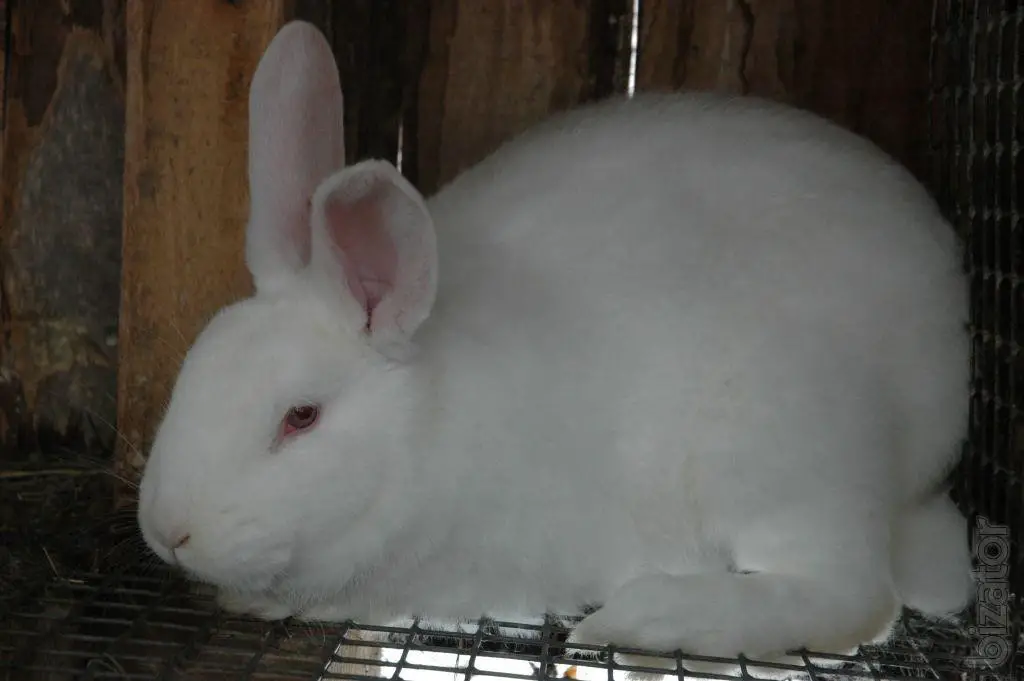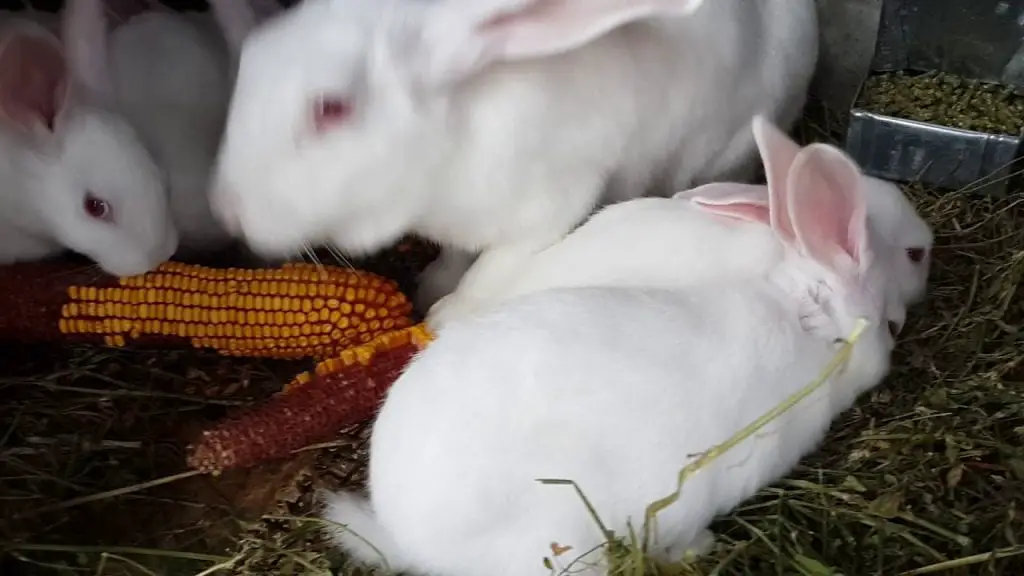Scientific Facts
| Common Name: | Panon Rabbit |
| Life Span: | 7-12 years |
| Size: | Medium |
| Country of Origin: | Hungary |

Physical Description
Panon Rabbits have medium-sized coats, particularly in the color of white. They have red eyes, and their body is lengthened with asymmetrical head. They have straight and average-sized ears. The texture of their built is thin, although not weak. They have an average weight of 4.5 to 4.8 kilograms. However, with comprehensive fattening, animals may still gain additional weight and may reach 5 kilograms.
Lifespan
The average lifespan of Panon Rabbits ranges from 5 to 12 years. Nevertheless, the life expectancy of these creatures still varies depending on the availability of food, diseases, predators, and how they endure in the given environment.
Eating Habits
Most Panon Rabbits like to graze on hay the entire day, which is good as this implies the way of life they were created for. Many rabbits in the wild carry out precisely this – although they can be more seemingly to embrace a nocturnal way of living to go distant from some predators. Their all-day grazing helps the teeth of the rabbit to become in excellent shape and guarantees a hearty gastrointestinal tract.

Sleeping Habits
In nature, Panon Rabbits are known to be day sleepers. Their main activity periods commonly happen during dawn and dusk. That says that the ideal time to play and interact with your rabbits is during the early evening or before you leave home for work. If your pet is snoozing or relaxed, you will often notice it to either lie aslope or in his stomach with back legs spread out behind it.
If you think that your pet is snoozing, do not disturb it and simply wait until it gets awaken. If you dare to wake it up, do not be bewildered if it is in a bad state of mind and attempts to bite you. You should know that that you have interrupted its natural sleeping pattern, and your pet does not like it.
Your best option for the bedding of your rabbit is either straw or hay, both of which it can feed.
Development and Reproduction
It is perceived that the Panon Rabbits have been a pleasant vapor for breeders since there are only minimal pitfalls when doing the breeding. This variety will not cause you a problem; nevertheless, it can deliver you profit and provide you the convenience to carry out your preferred business. The cute rabbits of this variety are very reproductive. During pregnancy, female Panon Rabbits may deliver up to 9 babies and may accumulate up to seven times a year. Females are popular for their breed orientation.

How to Breed
Determining the Sexes
Being able to determine the sex of your rabbit is a significant step in farming. Male Panon Rabbits are seen with testicles that are discernible if their outside part is inspected. Testicles are seen in-between the posterior legs, and they are narrow and long. Normally, testicles become discernible once the rabbit reaches 10 weeks.
You then have to verify whether your pet has a penis or vulva. To do this, part the coat gently between the legs until you see a little mound. This portion is the vent and has an outlet to the anus as well as the reproductive tract. You can see it more clearly if you put mild pressure on any side, which clears the surface and turns things more apparent and understandable.
The opening to the genital is the farthermost from the tail. Put gentle pressure through your finger and thumb on any side. You will know if your pet is a female if you notice a slit-like structure, usually demonstrated as letter I. You will then know that your rabbit is a male if you notice round structure, which is usually demonstrated as letter O.
Courtship and Mating
The Panon Rabbits rapidly arrive in sexual maturity, accumulate with gratification, delivering hearty offspring, quickly earning weight. The rabbit shall not allow the male just for himself if he goes through overweight. And, if there are no issues with males in this concern, then females should have a weight that is rigidly followed. To guarantee the success of the pairing, it is suggested to situate the rabbit in the cage of a female daily for 15 to 20 minutes. One week after, the process of fertilization is assured to take place.
Another thing to put into consideration when mating these rabbits is that intimately related crossing is not permitted. If you cannot obey this guideline, these animals shall lose their characteristics with every generation, which shall direct to an outright downturn of the species.
Eggs and Incubation
A unique characteristic of the breed is that the females demonstrate to be very nurturing mothers. They never leave their children. Further, they welcome other man’s rabbits. For a long period, young rabbits are fed with milk.
Common Health Problems
There are no common health issues among Panon Rabbits. However, this would seem applicable to those who nurture their rabbits in an appropriate condition, supervise nutrition, and regularly execute determent. If for any reason, you have lofted your rabbits, this may direct to various types of infections, namely; hemorrhagic disease, coccidiosis, salmonellosis, myxomatosis, and listeriosis.
Indications of these illnesses are apathy, loss in appetite, loose stools, and bloating. If you fail to begin the treatment early, you will notice their ears to drop, the lips become blue, and the eyes to swell. Constipation starts, temperature increases, itching happens, and ultimately the Panon Rabbit shall die.
Preventing Illnesses
In the worst scenario, a widespread shall begin on the farm, and the entire animals shall have to be demolished. To inhibit this from happening, you must keep the Panon Rabbits clean. You have to feed them with superior-quality feed and also vaccinate the immature early.
Panon Rabbits are characterized as prey animals; hence, their typical characteristic is to conceal any manifestations of illness. Owners should maintain an attentive eye to make sure their rabbits are peeing, pooping, drinking, and eating regularly. If by any chance, you observe any alteration in the behavior of your rabbit, you must seek the assistance of a veterinarian immediately.
It is also important that you schedule your rabbit for a regular checkup with a veterinarian. Vets can thoroughly inspect the gut, teeth, eyes, and ears to ensure that your pet is physically fit. Ultimately, contemplate neutering or spaying your rabbit. Neutering or spaying may lessen the aggressiveness of your pet, develop litter box habits, and develop the overall health of the rabbit.
Behavior
Pennon Rabbits have superior flexible capabilities. They are not frightened by either cold or heat. Such candor makes it feasible to lay the cells even on the streets. Moreover, they do not require huge space; thus, their homes shall not consume great space.
Habitat
Cage
Panon Rabbits are distinct animals. They have particular requirements for them to sustain the environment and be able to live long. Housing is very important for these animals to endure. Owners can choose to house their pets indoor. These pets can live unrestraint in a rabbit-proofed room, or they may be enclosed inside a puppy pen, rabbit condo, or huge rabbit cage. If enclosed, they should have a spacing that is huge enough that will allow them to hop around. Still, owners are ought to free their pets from their pens for a few hours in a day for their exercise routine.
Toys
Panon Rabbits easily get bored. Aside from their requirement of space to execute their exercise, these rabbits also require some mental stimulation through toys. There are wide options for rabbit-safe toys. Cardboard castles are the best ideas because these creatures consume many hours of chewing doorways and new windows. Cardboard castles also give quiet hideaway for the pet if needed.
Owners may also give an array of toys for the rabbit to kindle its interest.
Litter Box
These creatures have an innate tendency to pee and poop in a certain area. Exhaust this by assembling an average-sized litter box near to the hay feeder and water/food bowls. Place a lean layer of bunny-safe, reused newspaper pellet litter underneath the litter box. Wood shavings or clumping or clay cat litter are not safe to these rabbits. Then place hay over the litter. You should know that these creatures have the unique habit of eating and pooping simultaneously; thus, this will urge ideal litter box habits.
Diet
A Panon Rabbit’s diet must be primarily composed of hay. There should always be fresh hays given to the rabbits. Babies must be fed with alfalfa while adults must be fed with oat hay, grass hay, or timothy hay.
The use of a big hay feeder would be useful because it holds a huge volume of hay clean, dry, and accessible. It is also important that you complement the hay with enriched-fiber pellets, fresh vegetables, and freshwater every day.
How to Care for Panon Rabbit
Rabbits are commonly clean creatures. They often wash. However, as responsible owners, you still have to groom your pet regularly. Panon Rabbits undergo shedding cycles twice a year. It is necessary to shave your pet to eliminate the entire excess fur. Else ways, your pet may swallow it, which may trigger a severe digestive concern. Also, regular clipping of the nail is necessary since long nails may get ripped on things, or they may buckle into the paw of your rabbit.
Availability – Where to Get One?
Try to conduct comprehensive research as you can and carefully decide where to get your Panon Rabbit. You should know that a wrong choice may imply your rabbit may need plenty of veterinarian treatment, which can be very costly.
Ideally, rabbits are bought from prominent animal welfare charity rehoming centers. Credible welfare organizations shall check the health of all their pets before they are allowed to be rehomed and shall also help complement the most appropriate pet to your lifestyle. Before getting a Panon Rabbit, it is crucial that you first refer to an experienced breeder who may give you suggestions on a reputable variety.
If you consider getting your pet from a pet store, see to it that you thoroughly check the physical condition of the rabbit. Make sure that it is healthy and has been raised in a healthy environment. You will know that the rabbit is in good condition if you notice it to be energetic and bright when awake. There should be no discharges around the nose, ears, eyes, or bottom.
FAQs
Is it really necessary to feed my Panon Rabbit with hay?
Yes, feeding your Pannon Rabbit with hay is important. Hay is crucial to the health of your rabbit because it provides organic food, which lowers the risks of hairballs as well as other blockages.
How do I compensate with the diet of my rabbit if I choose to feed it with fewer pellets?
If you decide to feed your pet with a fewer volume of pellets, you should substitute the nutritive value with no calories, which is achieved by heightening the volume of vegetables. Also, hay should be reinforced throughout the day.
Are my children capable enough to get along with our Panon Rabbit?
If your kid is generally gentle and cooperative, you may see the fun of getting a rabbit in the family. However, if your kid is loud, very dynamic, happens to interact aggressively, or often happens to require warnings about or disputes guidelines, he or she may find it hard to establish a connection with your rabbit.
It is my first time raising a Panon Rabbit, is there an effective way of handling it?
The safest and surest first approach with a Panon Rabbit is to start by stroking the top portion of the head. You should not offer your hand to a rabbit to snuffle because many of them would see this action annoying and may assault you. Most of them do not appreciate having their chins or tips of their noses being caressed. You should also know that their feet can be ticklish.

